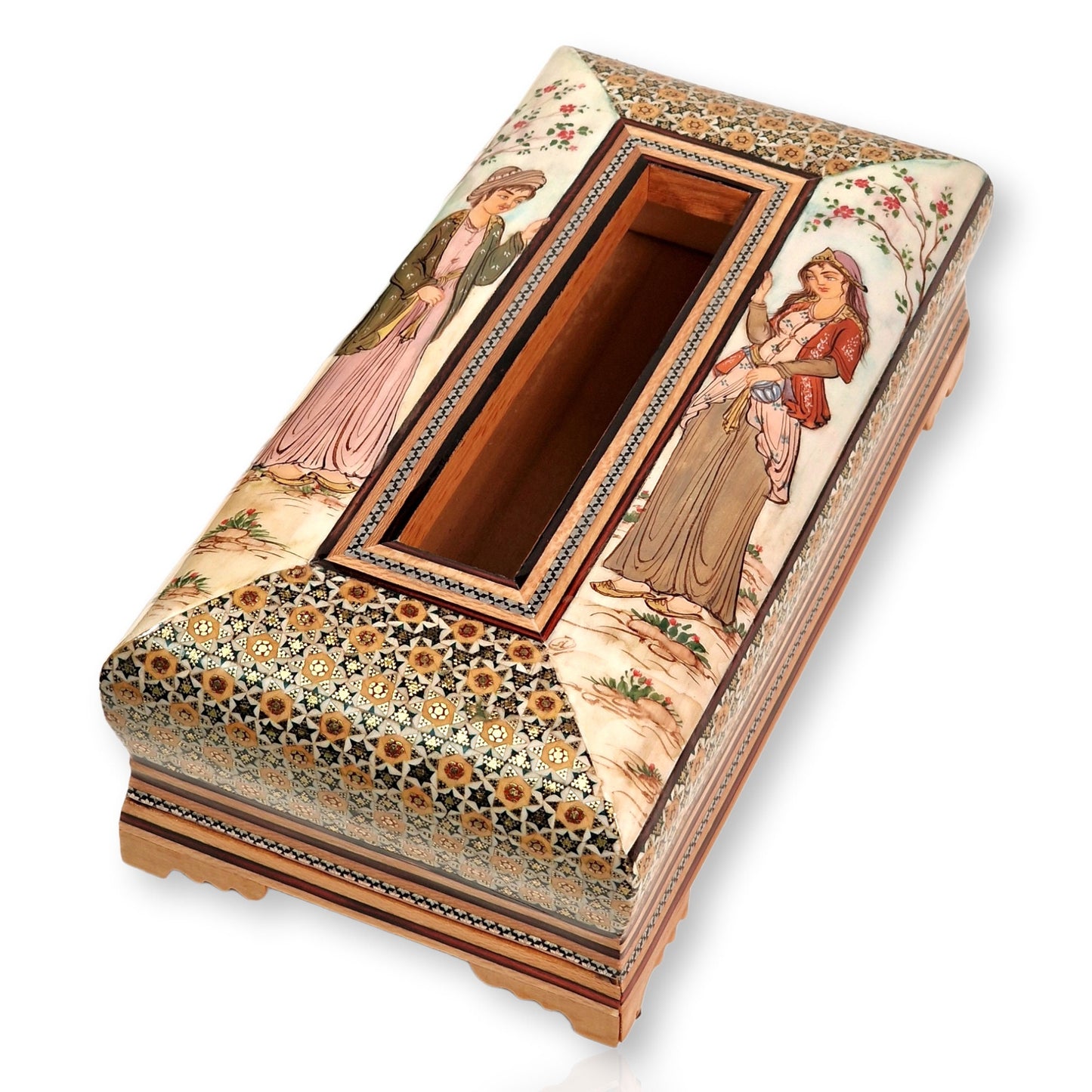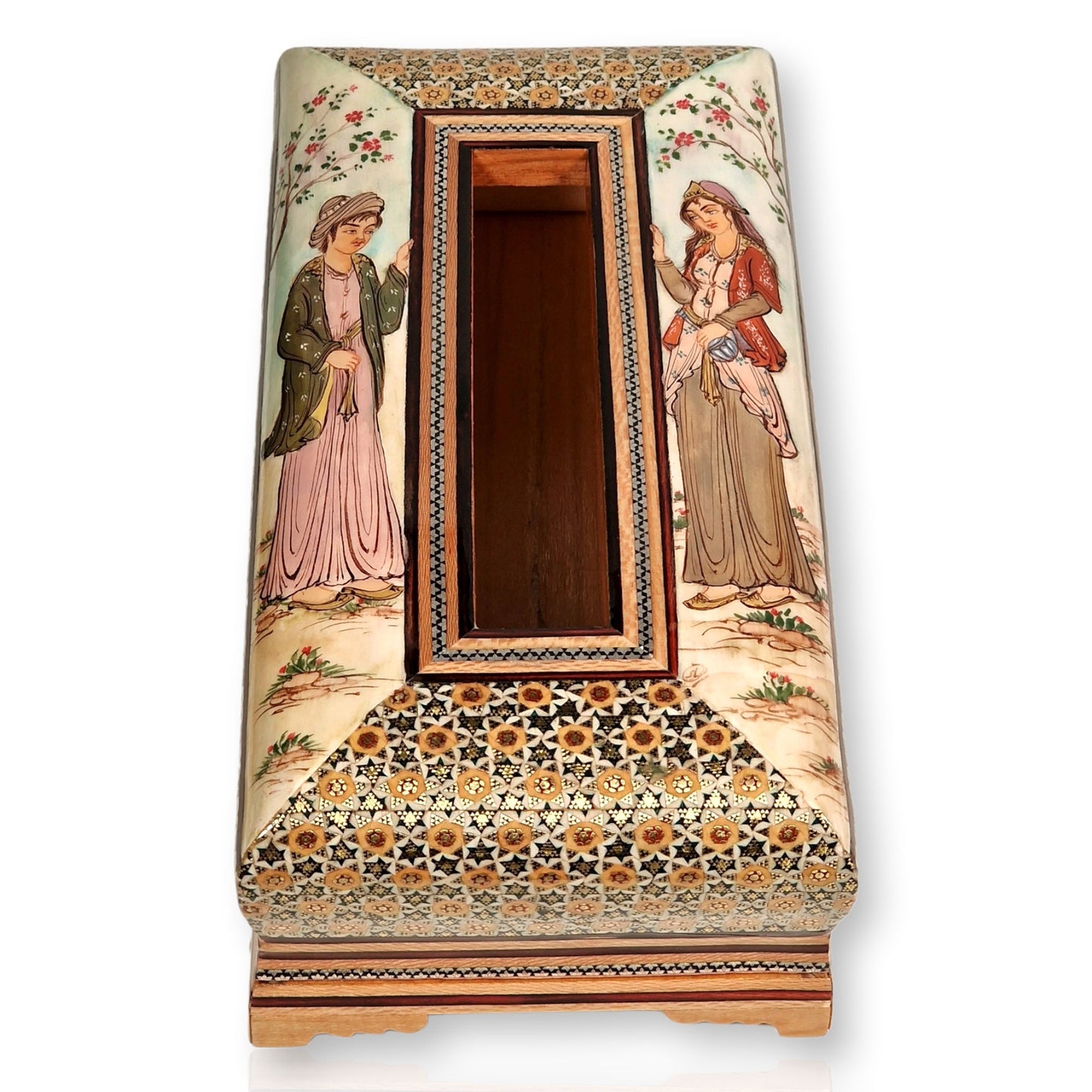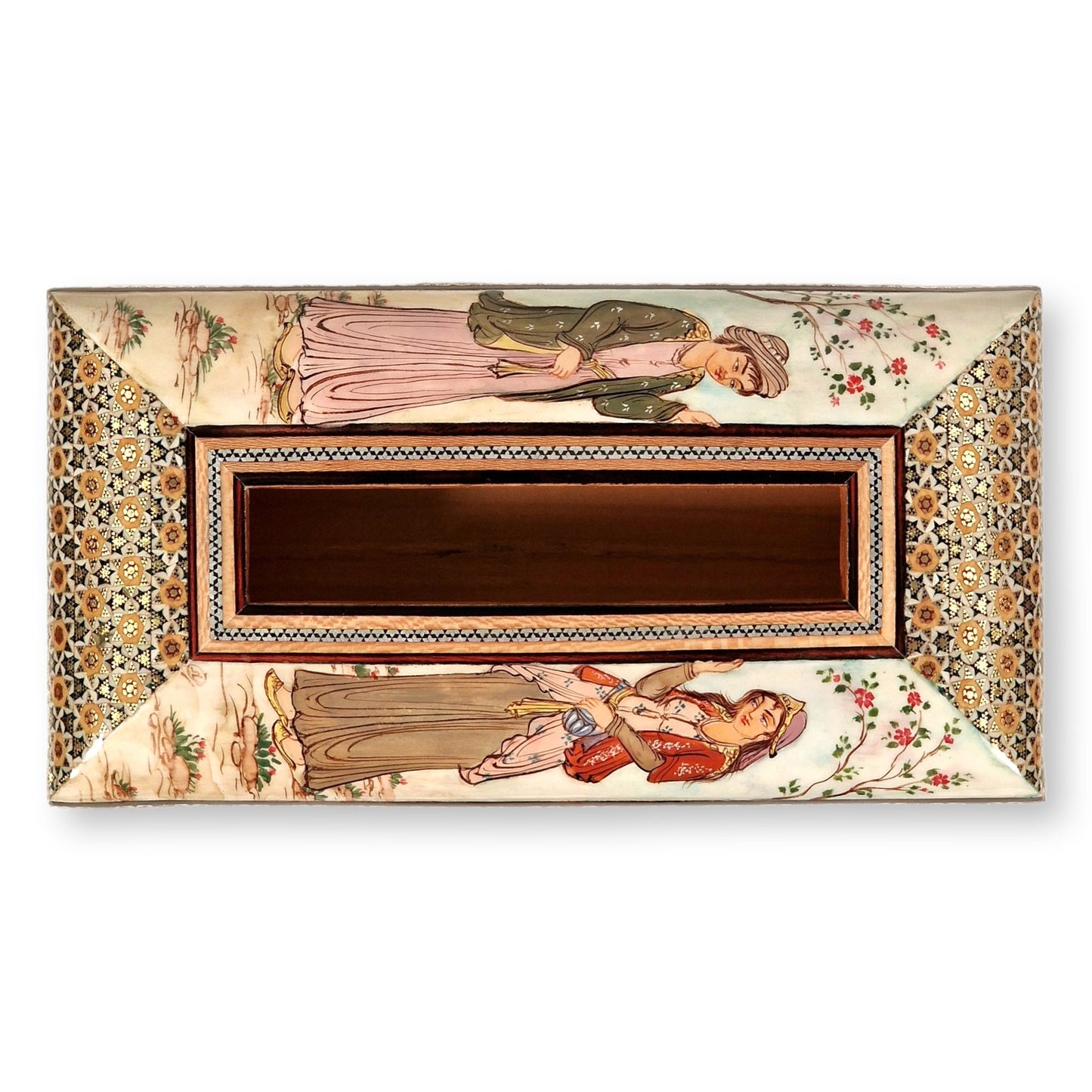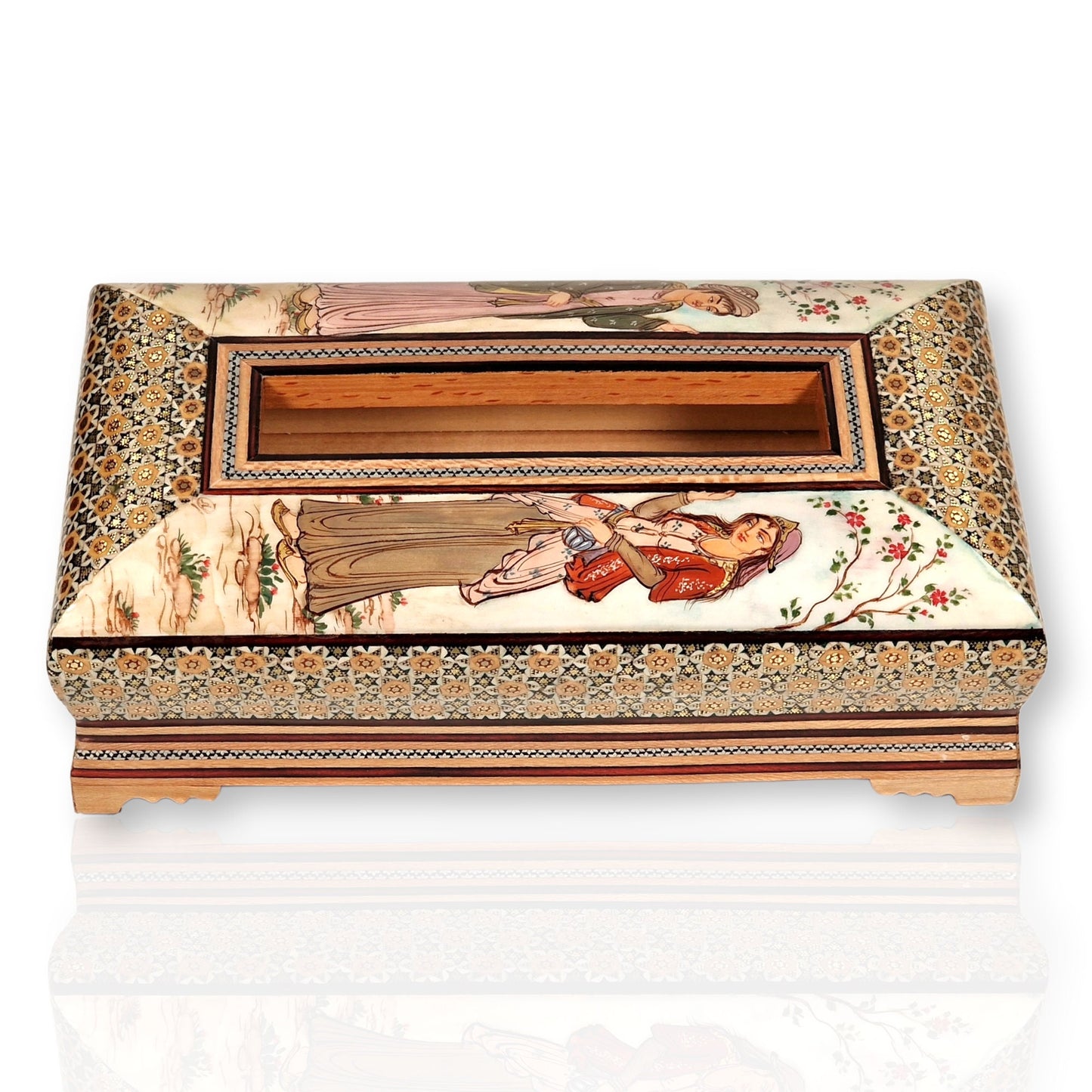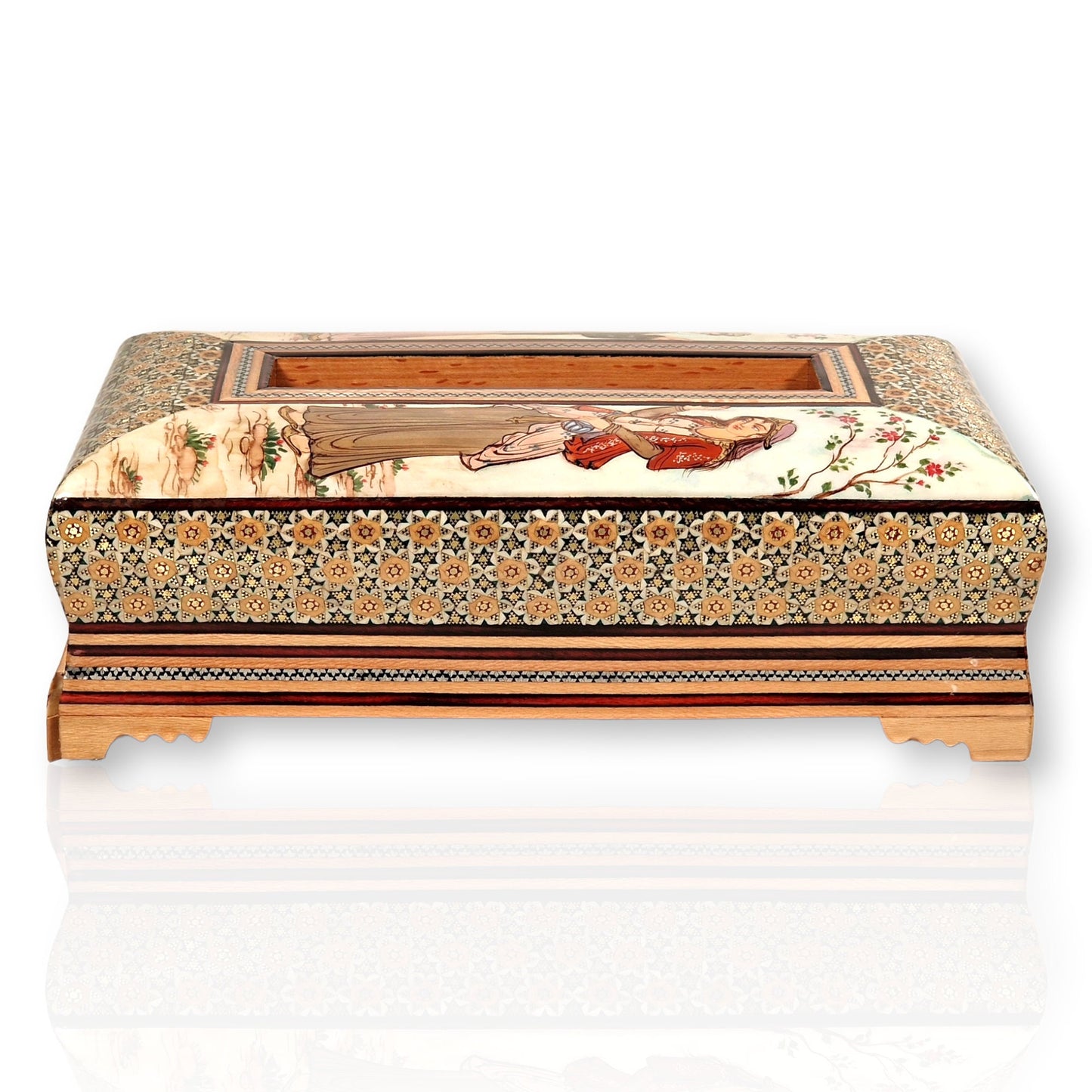Kervansara
Hand painted Persian art wooden marquetry napkin holder or "khatam kari" with enamelled miniature design of "Leyli and Majnun"
Hand painted Persian art wooden marquetry napkin holder or "khatam kari" with enamelled miniature design of "Leyli and Majnun"
Couldn't load pickup availability
Rectangular wooden napkin ring measuring 26 x 14 x 8.5 cm with a side opening at the bottom, handcrafted and hand-painted with a beautiful miniature design inspired by the tragic love story of “Leyli and Majnun” which takes place in 7th century Arabia, often compared to that of Romeo and Juliet but with a difference of more than 1000 years between the two and which also enjoys great popularity among the Turks and throughout the Middle East. Although this popular Arabic tale was already known previously in Persia, it was the innovative poetic work of Nizami Ganjaví in the 12th century which popularised it in a spectacular way in the literary world and of which many versions and imitations have been made, being considered as the most famous romance of Persian culture.
The two beautiful figures that lean against the inner frame are worked with great detail and attention to the clothing; the artist uses gold on the characters' clothing and accessories to give greater realism and a more luxurious appearance to the composition. The two lovers look at each other with tenderness, separated by a merciless destiny that will forever remain in popular memory as an eternal and true love. The other two sides and the entire side of the work are decorated with the laborious technique of "khatam kari" (marquetry), which gives a special shine and an exquisite finish to the whole.
Persia is undoubtedly one of the most important centres of the world in the art of inlay, especially the beautiful cities of Shiraz and Isfahan, the latter being where it originated under the rule of the Seljuk dynasty, although the golden age came during the reign of the Safavid monarchs. It requires precise craftsmanship and a great deal of patience and delicacy to create such exquisite pieces that decorate boxes, jewellery boxes or pen cases as well as embellish frames, clocks, vases and backgammon sets, among many other objects.
The technique used by the artists consists of creating a kind of mosaic from a pattern of regular polygons that can vary in the number of sides and then decorating the desired surface with them, which is usually made of wood or metal. For this work, long wooden rods, camel bone for the white colour and metal (brass is usually used for the golden tones) are joined together to form triangles that are then pressed and cut into very thin sheets, preferably 1 mm thick, which will be the ones that will be carefully adhered to the utensil that is to be decorated.
Among the most common geometric designs are star-shaped patterns, and in the most valuable pieces precious metals such as gold or silver are used, and bone is replaced by ivory. To give you an idea of the complexity of this work, approximately 250 pieces of bone, wood and metal are needed to create just one cubic centimetre of khatam, and if the surface to be applied is curved, the sheet must be heated to make it flexible and therefore mouldable.
Share
